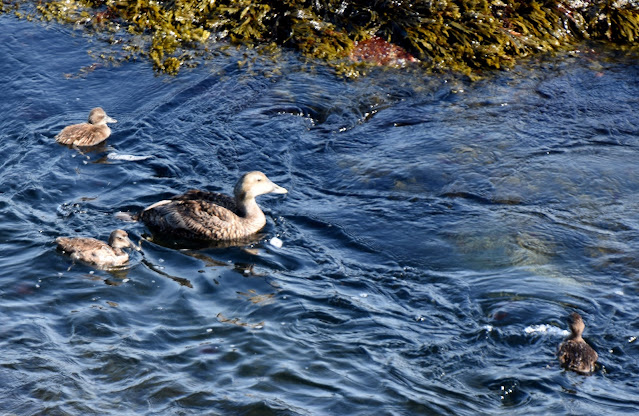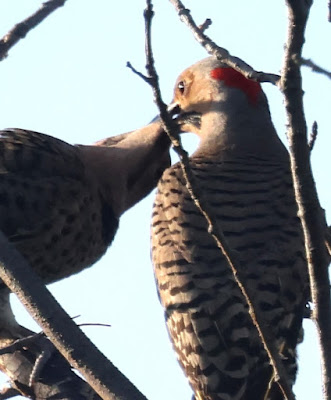Some species of newborn birds leave the nest almost immediately to forage on their own, often with at least temporary supervision and protection from their parents.
 |
| Common Eider ducklings at the tideline, Halibut Point |
They are able to find their own food immediately or at a very young age,
 |
A long-legged Piping Plover chick on the dunes at Plum Island |
swimming or running precociously before they are able to fly.
 |
Eastern Phoebe at the nest |
Nest-raised birds come into the world with the advantage of a more secure nursery, but their parents are pressed hard to satisfy their voracious appetites from the moment the youngsters break out of their shells.
 |
Green Heron collecting minnows |
The feeding program for nesting birds often moves quickly from regurgitated, partially digested baby food to captured prey brought back whole for the fledglings.
 |
Brown Thrasher with insect ready for delivery |
It's a race against time and danger to get those juveniles independently doing what birds do best, flying free.
 |
Northern Mockingbird |
Parents may take surreptitious routes with provisions for their concealed families.
 |
Osprey passing
Halibut Point,
|
 |
Cardinal carrying a dragonfly |
Herbivorous birds may need to supply animal-based proteins from outside the parents' usual diet at some point in the chicks' development.
 |
Northern Flicker parent and child this week, |
 |
the youngster siphoning food from its parent's throat. |
Hungry fledglings may continue to receive supplemental meals from adults after outgrowing cramped space in the nest.
 |
Barn Swallows on the quarry rim |
This Barn Swallow giving insect hunting lessons to its brood keeps their energy up with occasional morsels delivered on the wing into their gaping mouths..
 |
Common Tern adult and juvenile |
A young tern still learning to fend for itself is revived on an expedition far from its island home by a watchful parent.
These incidents of survival versatility give snapshots into the wonders of the natural world.
So 👁🙏🏼👁
ReplyDelete